#Car painting work in adalaj
Explore tagged Tumblr posts
Text

For top-quality automobile part repair in Sargasan, visit Lokyanam Automotives LLP. Our experienced technicians specialize in diagnosing and repairing all vehicle types, using only high-quality parts to ensure lasting solutions.
We pride ourselves on delivering exceptional customer service, with transparent pricing and a commitment to excellence. Whether it's routine maintenance or complex repairs, Lokyanam Automotives LLP is dedicated to getting your vehicle back on the road quickly and efficiently.
#Best Automobile Part Repair Shop in Sargasan#Car service in gandhinagar#Car painting work in adalaj#Best ceramic and PPF coatings in gandhinagar#Car Body Painting services in Gandhinagar
0 notes
Text
Kutch Trip Report 2021
2800 km in 9 days that is Kutch trip 2021 for us. Started as only 4 persons while planning, it took off with 8 persons in two cars one Renault Duster and the other Honda Jazz. It was to be Noel, Commander, me and Meera Madam from the Spiti Team. But overhearing our conversation, my younger son said I will also come. Navin from Delhi opted to join, then my son said let’s go in our car. That gave us some leverage. Anandhi my wife said I will also come. Biren and Madhavi joined from Vadodara. Unfortunately, Navin could not join due to Covid. Hence, it was 8 persons in two cars. I insisted on RT-PCR due to Covid so that there should not be any hiccups when we cross the state border either way, which was agreed upon.
Everything started rolling in, a group was formed to share the ideas, places to see, etc. Few meetings took place in virtually. It was loosely decided to have a 9 day trip. Of which first 5 days were planned and booked. Rest of the bookings, it was agreed to go as it comes. The plan which was agreed upon went like this.
Kevadia, Ahmedabad, Patan, Dasada, Dhordo, Bhuj/Nakhatrana, Lakhpat, Narayan Sarovar, Mandvi, Vadodara and Dandi. Biren insisted on staying with him on last day at Vadodara.
A week before D-day, it was finalised with a halt at Kevadia, stay in outskirts of Vadodara, pass Ahmedabad to Patan, and 2 night halts at Dasada, 2 night homestay at Chobari. That was upto 1st morning. At Chobari, Ramji Meriya, the owner of Nature Zone referred us to Jugal Tiwari the owner of Centre for Desert and Ocean at Nakhatrana.
Off went we 3 from Kalyan west on 24.2.2021, picked up Meera Madam from Kalyan east in the early morning and proceeded to meet the other group at Khaman junction on the highway. Noel and Commander started from Powai and reached there.
Day-1
Kevadia
After breakfast at Hotel Ahura, went to Kevadiya via Navsari-Rajpipla and reached Statue of Unity. We reached via Kevadiya railway station road and Noel reached the other way. Parked our cars at Valley of Flowers car parking. You can walk to the nearest gate also. Plenty of buses run for visitors to reach the gate, of course free of cost at frequent interval. As we have booked the tickets online, we showed the booking in our mobile and went inside. There are two types of tickets one for the gallery and the other to go in lift upto a certain level inside the statue to see the view from above. You may require atleast 3-4 hours to see around. Evening sunset near the dam and light show on the statue after sunset are additional attractions. Then we went to Vadodara outskirts and stayed in Hotel Apple Grand. (a nice hotel on the highway)
The 182-metre (600 feet aprox.) statue is dedicated to Sardar Vallabhbhai Patel, the architect of independent India. The colossal monument towers over River Narmada and overlooks the vast surrounds and the river basin and the sprawling Sardar Sarovar dam. The Sardar Sarovar Dam is the third highest concrete dam (163 metres) in India after Bhakra (226 metres) in Himachal Pradesh and Lakhwar (192 metres) in Uttar Pradesh. A Light and Sound show using laser technology projected on the Statue of Unity takes place every evening except Monday. For further details about the Statue of Unity click here
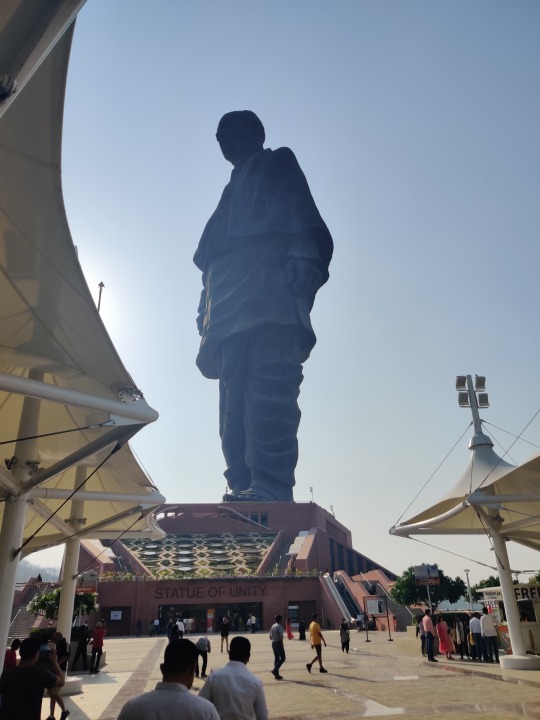
Day-2
Biren and Madhavi joined us in the morning. At breakfast, we decided to skip Sabarmati as going in Ahmedabad would delay our journey. Instead we went to Adalaj Stepwell.
Adalaj Stepwell
The flamboyant 15th-century stepwell, with intricate carvings on the pillars that support the five storeys are mostly intact; the beams work as pit stops for pigeons flying in and out and the structure still leaves jaws dropped for swarms of people. The step-well represents the Indo-Islamic fusion architecture that percolated through the many stepwells of the period. The opening in the ceilings above the landing allows light and air to enter the octagonal well, but direct sunlight never touches the steps except at noon. It is said that the temperature inside the well is six degrees cooler than outside. The stepwell has three entrances. The stairs lead to an underground storey, which has an octagonal opening on top. The walls are covered in ornamental carvings with mythological and village scenes. You can read about it more here
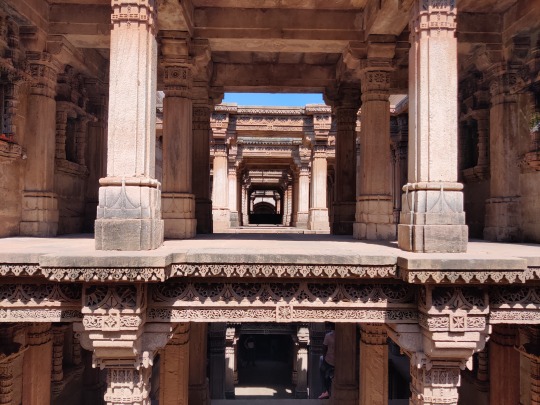
Rani-ki-vav, Patan
Next stop was Patan, the world heritage site of Rani-ki-Vav. This is one of the oldest and finest stepwells in Gujarat and is remarkably preserved. Steps lead down through multiple levels with lines of carved pillars and more than 800 sculptures, mostly on Vishnu-avatar themes, as well as striking geometric patterns. The stepwell is made in the form of an inverted temple. It showcases superior craftsmanship of the era, and the unique Maru-Gurjara architectural style. The stepwell was built in 1063 by Rani Udayamati of the Chaulukya Dynasty to commemorate her husband, Bhimdev I. The stepwell was commissioned in 1063 and was completed after 20 years. Archeologists Henry Cousens and James Burgess visited it in 1890s when it was completely buried under silt and only the shaft and few pillars were visible. The stepwell was rediscovered in 1940s, and the Archeological Survey of India restored it in 1980s. The stepwell has been listed as one of UNESCO's World Heritage Sites since 2014. Read more here
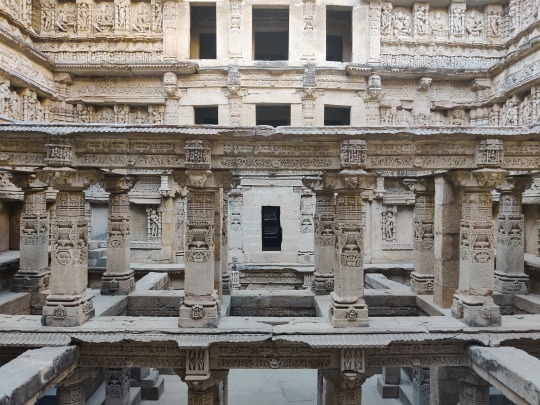
Sun Temple, Modhera
The guide we hired here told us to go to Modhera also. So we went to Modhera before the close of the site for the day. Modhera is an ideal destination for being away from the hustle-bustle of city life for a day. The unruffled peaceful landscape and the majestically welcoming temple complex will ensure to take you away from the mundane routines of daily. As you enter the historical complex, you first come across the magnificent kund known as the Ramakund, built in rectangular shape containing 108 shrines to various gods and demi-gods. There are three main shrines positioned on the three sides of the kund, dedicated to Ganesh and Vishnu and an image of Lord Shiva dancing the ‘tandav’ facing the temple of the sun which covers the fourth side. The twelve representations carved on the pillars represent the sun according to the twelve months. The statue of the sun god no longer exists. More about here

Reached Rann Riders, Dasada, Little Rann of Kutch in the night. During the night you can miss the sign board, while reaching advised to go slow so that you can take a proper turn to reach the resort. We met Cyclist Brajesh Sharma who was going live on YouTube from the Nature Zone. He is on All India Tour on cycle to create awareness about dangers of using plastic in general and single use plastic in particular. He regularly interacts with the schools, colleges on his tour which he started a year back. Follow him here
Day-3
Little Rann of Kutch
Morning after breakfast, went for the dry land safari in the Wild Ass Sanctuary and wet land safari in the evening. Being the world’s only natural habitat for wild ass, the sanctuary of course draws people to watch these magnificent creatures. However, the sanctuary harbours a large variety of bird population. The Rann was a shallow part of the Gulf of Kutch earlier. It is formed through the process of siltation of marine estuary. During monsoon, the Rann becomes a vast shallow sheet of water which dries up by October, November. Flamingos, Pelicans, Spoonbills, Glossy Ibis and Painted Storks etc were seen by us. We saw Brahminy Duck, Sandgrouse, etc. also.

Day-4
Left for Dholavira for Harappan Excavation another UNESCO World Heritage site. This was the highlight of the trip. As all you know, every such trip has a highlight and a place worth visiting, a lifetime achievement. Dholavira was one such place. You are reminded of the advance techniques used by people more than 4500 years ago. You will not believe until you see such place. Personally, I feel what you are taught in schools about history is nothing when you visit such places and hear from government guides.
Dholavira
Dholavira is the most remarkable excavations of the Indus Valley Civilization or Harappan culture, dating back to 4500 years ago. What Dholavira offers you, in the intense environment that comes with being surrounded by the Great Rann of Kutch, is a unique insight into the pioneering Harappan mind, with one of the world’s earliest and best planned water conservation systems and what might be the world’s first signboards, written in ancient Indus script.

The excavation also tells the story of the 7 stages of the civilization, from development to maturity to decay, the last of which hints at a strange piece of history, with more questions than answers. After the peak of the civilization Dholavira was temporarily abandoned, after which it seems that the settlers returned with a markedly de-urbanized culture. There are hints that they willingly chose to simplify their lives, rather than try to ride the collapse of their once glorified civilization. Here, on the ruins, you will have a chance to contemplate what progress and civilization mean and what, if anything, is truly permanent.
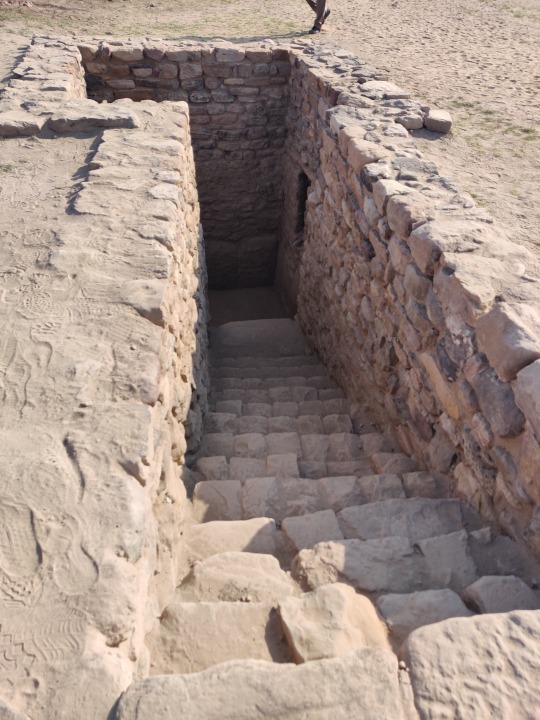
Dholavira, known locally as Kotada (large fort), sprawls over 100 hectares of semi-arid land at the north-west corner of the island of Khadir. It is one of the islands in the Great Rann of Kutch that remain above the flood-plains in months when the rest of the desert is submerged by the monsoon. Dholavira has two seasonal nallahs, or streams: Mansar in the north, and Manhar in the south. The journey to Dholavira itself is beautiful, taking you through the saline desert plains of the Great Rann, where you can spot wildlife such as chinkara, nilgai, flamingos and other bird life.
The site was unearthed by the Archeological Survey of India (ASI) in 1967, but has been systematically excavated only since 1990. It has a museum where all the artefacts are on display. Visit this website for more information.
Chobari
We started for Chobari, Nature Zone, our final stop of the day. The google map shows the wrong route at the last leg. But follow your instincts and go, as the people nearby are helpful. Ashwath drove through a village and people guided properly. When in the map it was showing the homestay is just across, I told him just take a turn instead of going ahead. Just then, I noticed a board showing the way. So, we went first, as the other car followed the google map and was helped by Ramji by sending a person to show the way. It is very difficult in the night and if you are new in these areas.

Meriya Nature Zone is a homestay and bookings can be made through personal contacts. It is yet to be on internet. The homestay is very good with basic amenities. As mobile network is available, no worries about internet connection. Ekal Rann is nearby and the full moon with Rann in background is something to be experienced. For bird lovers, the homestay itself is a heaven as Maharashtra’s state bird Yellow footed Green Pigeon, peacock, red vented bulbul, kingfisher, Domicile’s crane, etc are plenty. Just outside the homestay, there is a water body, where lot of coots, cormorants, ducks, shag, etc can be seen.
Day-5
Ekal Rann
Noel and others went for nearby bird watching where hordes of peacock, common cranes, calves feeding takes place and came back. The other group enjoyed the bird watching and village experience chitchatting under the tree in the homestay. As we have not decided about our further stay at Nakhatrana/Bhuj, Ramji Meriya suggested us Jugal Tiwari at Nakhatrana. We finalised the stay at Nakhatrana, Centre for Desert and Ocean (CEDO) for two nights. In the evening we went to Ekal Rann for sunset and full moon. We saw flamingos and cranes in thousands. The slushy road in between leads to Dholavira but only when it dries. Ramji was telling that due to excessive rains this year, it has not dried up. He also remembered his pioneering effort of bike rally from Ekal to Dholavira and back.
Day-6
Bhuj
After breakfast, we started off to Bhuj, and straight went to Aina Mahal but unfortunately, we reached around 12.30 pm. It is closed between 11.45 am and 3.00 pm. Then, Noel suggested to go to his friend’s hotel (Hotel Annapurna, near Bhid Gate). We thought of getting our RT-PCR done and enquired with Gor and Jugal Tiwari and agreed to do it in Bhuj before proceeding further to Mandvi and then to Nakhatrana. Bhagat lab, Bhuj does the RT-PCR in Bhuj.
Mandvi Beach
We then went to Mandvi beach and spent time. There must be some other point where seagull, spoon bill etc, are plenty. The beach point is very crowded with camel ride, boat ride, joy ride etc. and bustling with lot of people. We were wondering where this corona went?
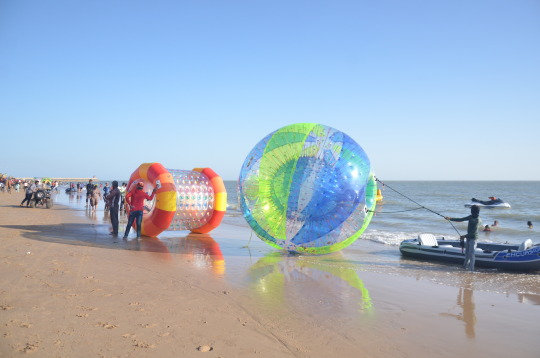
Reached Moti-Virani village, where CEDO is situated and here came to know about Jugal Tiwari is ex. BNHS person. He was also pleasantly surprised to know about us being BNHS members. The booking at CEDO is through internet only and some times through contacts known to him. In our case Ramji Meriya. No bookings on go and knock.
Day-7
Lakhpat, Narayan Sarovar
Mata-no-Madh, Ashapura Temple
After breakfast, we started for Lakhpat the fort town. On our way we stopped at the Mata-No-Madh Ashapura Temple. This shrine is steeped in antiquity as far as its origin is concerned. Today there is no trace of any ancient records or writings which give any indications of the beginning of worship at this shrine. One fact firmly stands out that this deity was very much there in 9th century AD when the Samma clan of Rajputs from Sindh first entered western, or more correctly, north-western Kutch. They were followed in the later centuries by more families or this clan which eventually established them in the region and one of their line got control of the whole state of Kutch in the beginning of the 16th century. Then we went to Siyot Caves. It is a small Buddhist cave as the name suggests. From Siyot to Lakhpat, the road after passing a village was only bushes and mud road. Though the google map shows it as Siyot-Lakhpat Road, it is a challenge to drive on this road which joins the Gaduli-Lakhpat Road at the end.
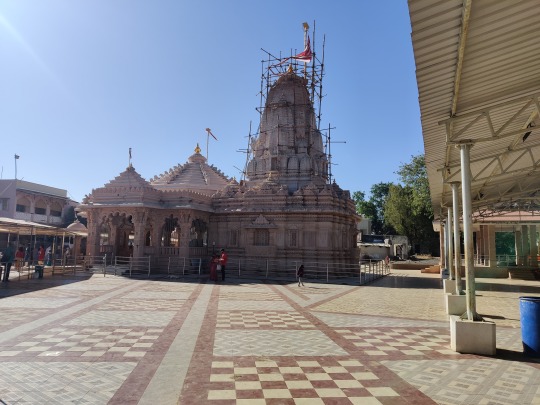
Lakhpat
Lakhpat Fort with a walled fort, was an important coastal trade node in the 18th century. At the mouth of the Kori creek, the large fort walls still offer testimony to a short but glorious past. One can climb the fort rampart, the only remaining structure of the fort, and look over at the placid sea. This spot is particularly stunning at sunset. Within the fort walls, also lies a 16th century gurdwara. It is believed that Guru Nanak stopped here twice during his second (1506–1513) and fourth (1519–1521) missionary journey called Udasis. The gurdwara is a soothing spot for travellers. The soft hymns play constantly in the background, as travellers visit the ancient Sikh place of worship to see relics like wooden footwear, palkhi (palanquin), manuscripts and markings of two important heads of Udasi sect. We had prasad at the Gurudwara Langar.

More than 200 years old, the fort is named after Rao Lakha, who ruled in Sindh about the middle of the thirteenth century. It fell to ruins through the century, as trade depleted, and the people in the town migrated to fairer pastures.
Narayan Sarovar
Narayan Sarovar Temple has great spiritual significance. This is one of the 5 holy lakes of Hinduism, along with Mansarovar in Tibet, Pampa in Karnataka, Bhuvaneshwar in Orissa and Pushkar in Rajasthan, and is considered a coveted place for a holy dip. The origin of Narayan Sarovar dates back to the Puranas. It is said that there was a drought in the region, and Lord Vishnu appeared in response to ardent prayers by sages. When he touched the land with his toe, a lake was immediately created, alleviating the locals from their misery. An adjoining temple built by the wife of Maharao Desalji features shrines of Shri Trikamraiji, Laxminarayan, Govardhannathji, Dwarkanath, Adinarayan, Ranchodraiji and Laxmiji. Madhavi was excited to know about Vallabhacharya, who had baithak at this place. She interacted with the pujari of the temple to know more about it.
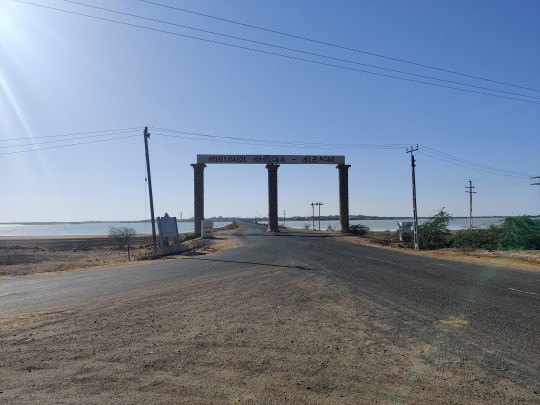
A short drive from here, the Koteshwar Mahadev Temple is a grand sandstone structure that overlooks a marshy sea. Shrines dedicated to Shiva and Ganesha are the highlights here. Koteshwar Temple, at a place where the immensity of dry land meets the incomprehensible vastness of the sea. It is the last outpost of human construction and the temple at the westernmost limit of India. The story of Koteshwar begins with Ravana, who won a boon from Lord Shiva for an outstanding display of piety. This boon was the gift of a Shiva linga of great spiritual power, but which Ravana, in his arrogant haste, accidentally dropped and it fell to earth at Koteshwar. To punish Ravana for his carelessness, the linga turned into a thousand identical copies (some versions of the story say ten thousand, some a million; suffice to say it was quite a lot.) Unable to distinguish the original, Ravana grabbed one and departed, leaving the original one here, around which Koteshwar Temple was built. Visitors can see the temple, walk along the beach and on a clear night, even see the glow of light from Karachi, Pakistan, on the north-western horizon. One more observation was that the flag is so long that it touches almost the sides. Never seen temple flag so long.
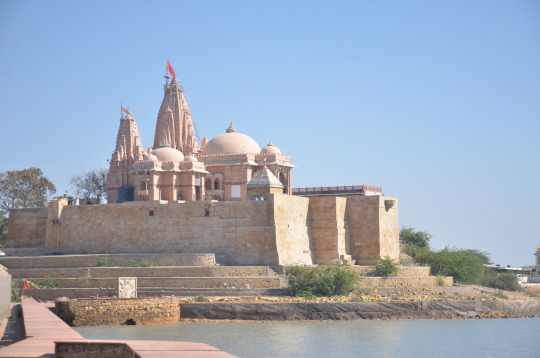
On our way back, we were looking for the tropic of cancer line which we could not find while going. To our delight, we found the board but the markings on the road is not at all visible may be due to asphalting of roads and ignorance of the contractor who laid the road.
We skipped going to Nirona village for award winning rogan artistes, bell makers, Lacquer works due to paucity of time.
Day-8
We started after our breakfast for Vadodara. Wait. Jugal Tiwari wanted to show us his fossil collections which was spellbound. He explained patiently and offered his help those students for their academic purpose. He also showed us the bell works and rogan art which he sells to guests as promotion of cultural appreciation. After exchanging pleasantries, we left for Biren’s house. The drive was a long one. We took a different route in which the road was not at all good as compared to arterial roads. Hence, we reached Vadodara at least 30-40 minutes after they reached. Noel went to his daughter in law’s place. We had a on the go Vadodara darshan in Biren’s vehicle. Meera Madam revisited her student days. We purchased some sweets and savouries for our contacts and colleagues in Mumbai. Else you will be stuck for response for it will be like Returned and had dinner at Biren’s house.
Day-9
Left early around 7 am. Biren dropped Commander and Meera at the designated spot to meet Noel. Transferred the luggages accordingly. Off we went to Dandi.
Dandi
The 'National Salt Satyagraha Memorial', Dandi, is conceived as an experiential journey recreating the spirit and the energy of the 1930 Dandi March led by Mahatma Gandhi and 80 of his fellow Satyagrahis, taking the visitors to the Monument step-by-step in order to visualize and understand the history of the historic Salt March and the methodology of Satyagraha, which finally led to India’s Independence. As Noel asked us to visit his factory at Vasai, off we went from Dandi to Vasai. We reached first and was waiting who joined after half an hour. Noel showed us his factory and his award-winning instruments. We said good-bye with lot of memories of the fascinating trip. Dropped Meera Madam at her place and returned to Kalyan west at sunset.
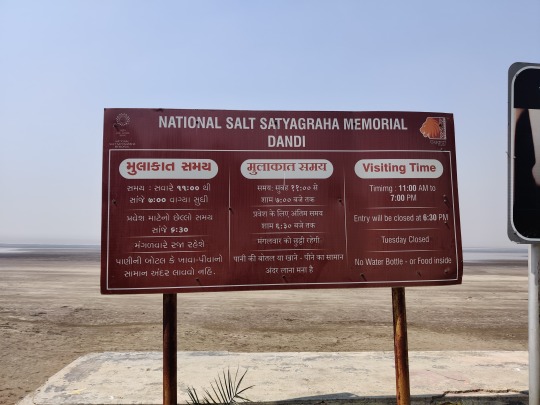
Note:
In view of Corona, we followed the safe procedure like wearing mask always when stepping out, in car, etc.
Did RT-PCR for each person for crossing the state border even though there was no check.
Thanks to Noel and Ashwath our excellent drivers. Commander for a brief change drove a portion of the trip.
--- ---
0 notes